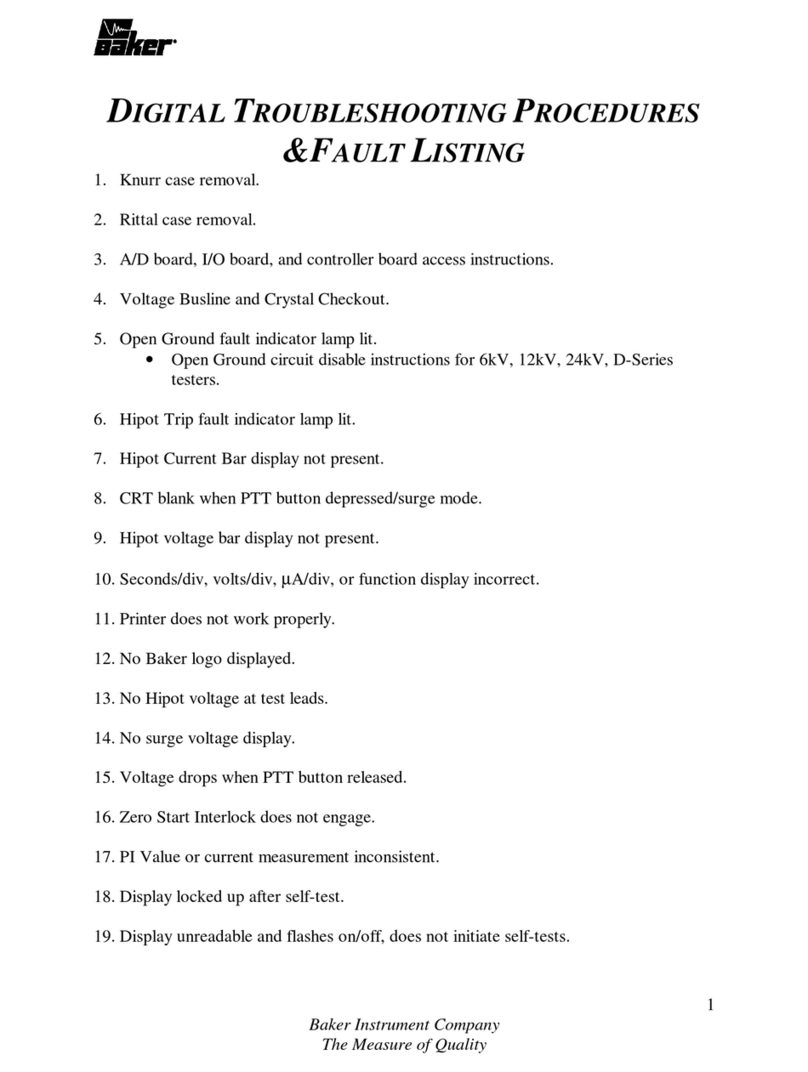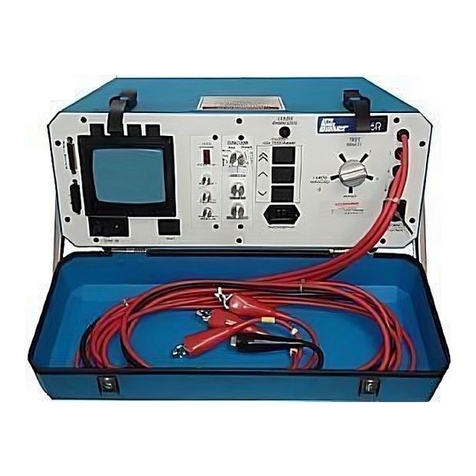
Warranties and Disclaimers
12/7/2009 | 71-026 V2
PP24
2
Warranties; Disclaimers
Limited Warranty as to Baker/SKF Brand Products.
1) Baker/SKF warrants that Baker/SKF brand Products, if any, that are sold under the
Agreement shall be of the kind and quality described in Baker/SKF's acknowledgment of
Buyer's Order, and shall be free of material defects in workmanship and material for a
period from the date of shipment equal to (i) twelve (12) months in the case of new
Products (including factory-installed circuit boards, accessories and options purchased
concurrently with the applicable Product), (ii) six (6) months in the case of used or
refurbished Products, and new circuit boards, accessories and options delivered separately
from the applicable Product, (iii) a period of ninety (90) days from the date of shipment in
the case of used or refurbished circuit boards. If any such Product , accessory or option
is not as warranted, Buyer must notify Baker/SKF thereof in writing within the applicable
warranty period.
2) Baker/SKF's sole obligation, and Buyer's sole remedy, under the foregoing warranty shall
be to provide the parts and labor for the repair or replacement (at Baker/SKF's sole
option) of defective parts, recalibration of any portions of a product that could reasonably
have been affected by the repair, and functional verification to affirm proper operation.
When, subject to the next sentence, the Buyer returns Products, accessories or options
to the Baker/SKF factory for warranty service, Baker/SKF will bear the cost of return
packaging, and shipping , and insurance ,on the return shipment. For Products,
accessories or options that Baker/SKF designates as “on-site service only” due to their
size, the permanence of their installation pr otherwise, travel expenses (including labor
costs for time spent traveling) for warranty services are covered to the location of
original shipment and installation. Products, accessories and options that are capable of
being returned to the factory for service may receive warranty service on site, but all
travel expenses (including labor charges for time spent traveling) shall be the
responsibility of Buyer.
3) For warranty coverage of “on-site service only” items, Buyer must make available to
Baker/SKF a knowledgeable operator to assist with preliminary diagnosis prior to a
service trip being scheduled. Buyer, in connection with a request for on-site service,
must be capable of authorizing charges for the service visit in the event the issues
discovered are not covered by warranty, such as application errors or installation errors.
If Buyer, having elected to perform installations without Baker/SKF’s participation and
having encountered irresolvable problems, shall be charged for an installation if on-site
assistance is necessary, except when defective product is determined to be the cause.
Warning: Baker Instrument Company, an SKF Group Company assumes no liability for
damages consequent to the use of this product. No part of this document may be reproduced
in part or in full by any means such as photocopying, photographs, electronic recording,
videotaping, facsimile, etc., without written permission from Baker Instrument Company, an
SKF Group Company, Fort Collins, Colorado.





























